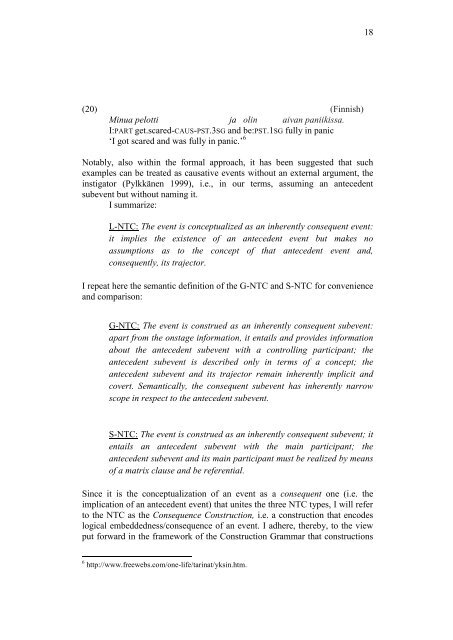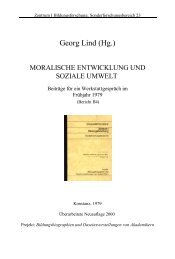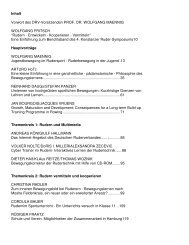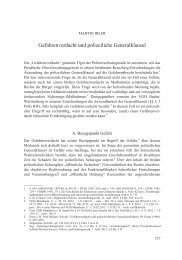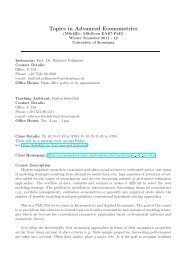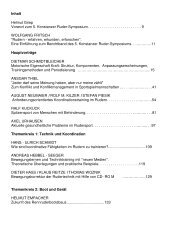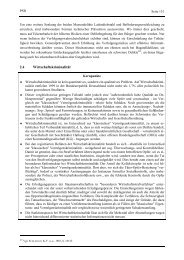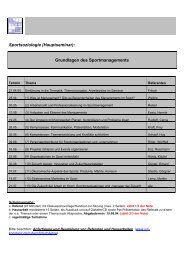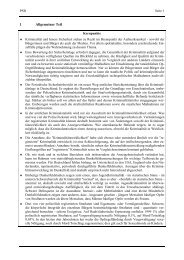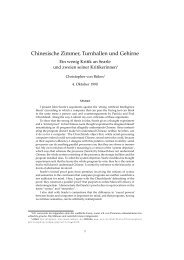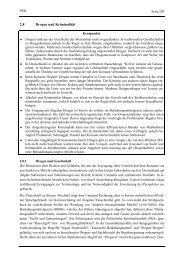Subjects and non-subjects in constructions
Subjects and non-subjects in constructions
Subjects and non-subjects in constructions
You also want an ePaper? Increase the reach of your titles
YUMPU automatically turns print PDFs into web optimized ePapers that Google loves.
18<br />
(20) (F<strong>in</strong>nish)<br />
M<strong>in</strong>ua pelotti ja ol<strong>in</strong> aivan paniikissa.<br />
I:PART get.scared-CAUS-PST.3SG <strong>and</strong> be:PST.1SG fully <strong>in</strong> panic<br />
‘I got scared <strong>and</strong> was fully <strong>in</strong> panic.’ 6<br />
Notably, also with<strong>in</strong> the formal approach, it has been suggested that such<br />
examples can be treated as causative events without an external argument, the<br />
<strong>in</strong>stigator (Pylkkänen 1999), i.e., <strong>in</strong> our terms, assum<strong>in</strong>g an antecedent<br />
subevent but without nam<strong>in</strong>g it.<br />
I summarize:<br />
L-NTC: The event is conceptualized as an <strong>in</strong>herently consequent event:<br />
it implies the existence of an antecedent event but makes no<br />
assumptions as to the concept of that antecedent event <strong>and</strong>,<br />
consequently, its trajector.<br />
I repeat here the semantic def<strong>in</strong>ition of the G-NTC <strong>and</strong> S-NTC for convenience<br />
<strong>and</strong> comparison:<br />
G-NTC: The event is construed as an <strong>in</strong>herently consequent subevent:<br />
apart from the onstage <strong>in</strong>formation, it entails <strong>and</strong> provides <strong>in</strong>formation<br />
about the antecedent subevent with a controll<strong>in</strong>g participant; the<br />
antecedent subevent is described only <strong>in</strong> terms of a concept; the<br />
antecedent subevent <strong>and</strong> its trajector rema<strong>in</strong> <strong>in</strong>herently implicit <strong>and</strong><br />
covert. Semantically, the consequent subevent has <strong>in</strong>herently narrow<br />
scope <strong>in</strong> respect to the antecedent subevent.<br />
S-NTC: The event is construed as an <strong>in</strong>herently consequent subevent; it<br />
entails an antecedent subevent with the ma<strong>in</strong> participant; the<br />
antecedent subevent <strong>and</strong> its ma<strong>in</strong> participant must be realized by means<br />
of a matrix clause <strong>and</strong> be referential.<br />
S<strong>in</strong>ce it is the conceptualization of an event as a consequent one (i.e. the<br />
implication of an antecedent event) that unites the three NTC types, I will refer<br />
to the NTC as the Consequence Construction, i.e. a construction that encodes<br />
logical embeddedness/consequence of an event. I adhere, thereby, to the view<br />
put forward <strong>in</strong> the framework of the Construction Grammar that <strong>constructions</strong><br />
6 http://www.freewebs.com/one-life/tar<strong>in</strong>at/yks<strong>in</strong>.htm.


